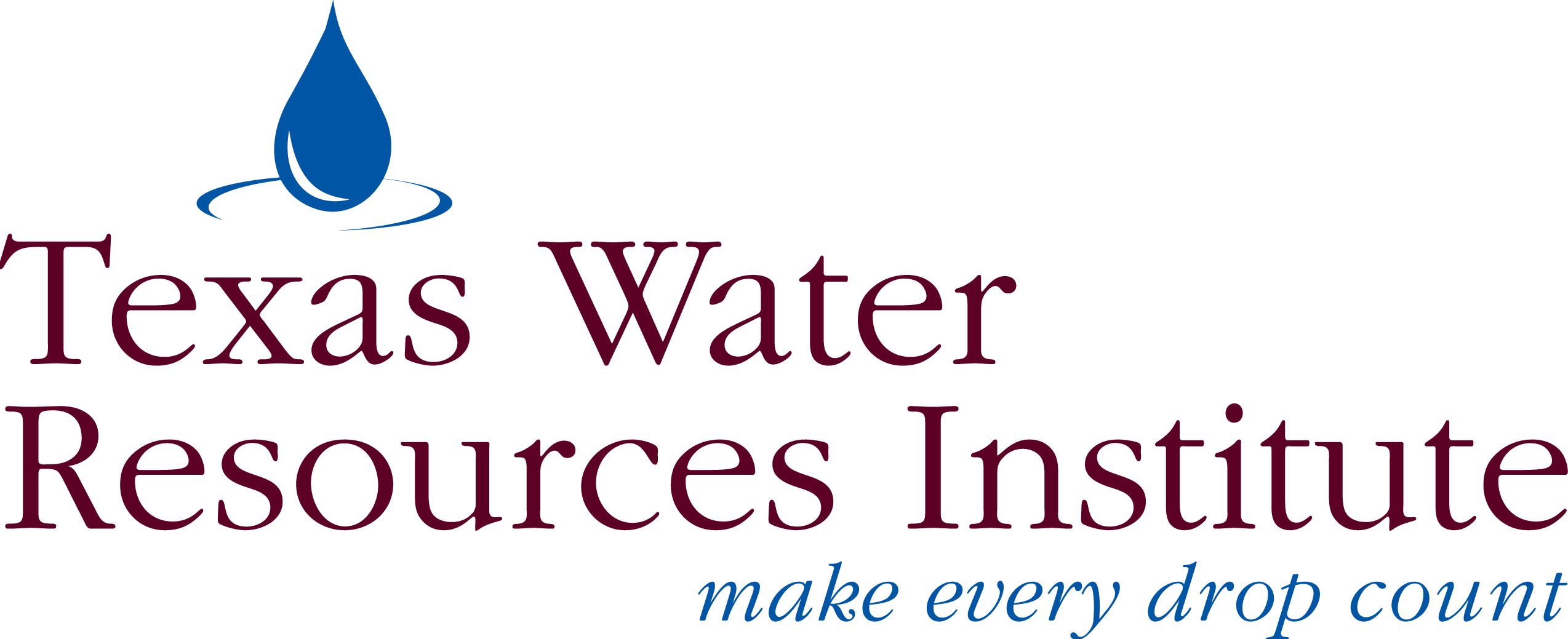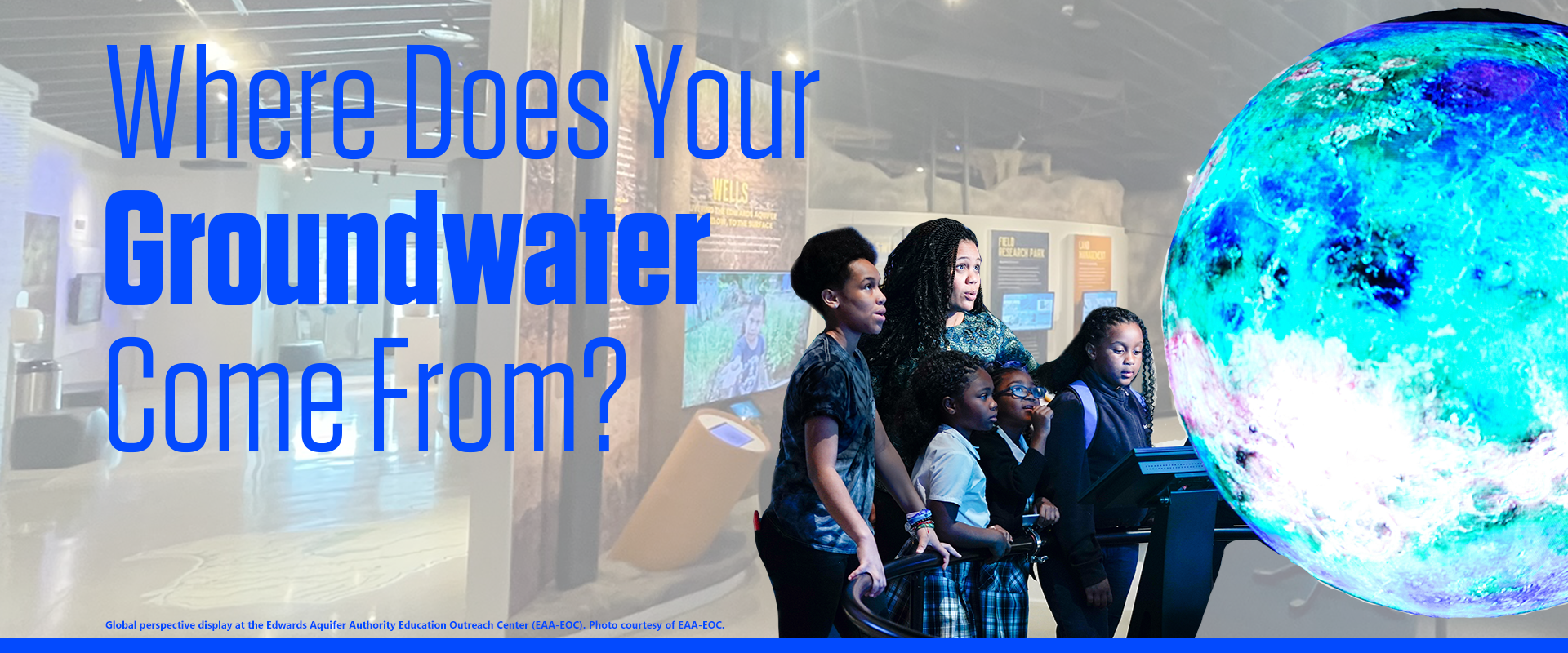On any given day, Sarah Valdez could be teaching 2nd-graders that their drinking water comes from deep underground, showing high schoolers how to examine an endangered aquifer-dwelling beetle with a microscope, or demonstrating for families how fast pollutants can seep through a limestone aquifer into groundwater.
Valdez serves as senior outreach coordinator at the Edwards Aquifer Authority Education Outreach Center (EAA-EOC) in San Antonio, where she helps people learn groundwater basics and take steps towards conserving water in their daily lives.
“We try to make it exciting because groundwater is intangible — you cannot see what lies beneath you, and that can be hard to teach,” she said.
Throughout the state, many Texans are unsure whether their drinking water source is surface water or groundwater, although 55% of all water used in Texas is groundwater, according to the Texas Water Development Board.
Could in-person groundwater education help individuals eventually protect and conserve groundwater in their daily lives?
Aquifer basics
Water educators like Valdez communicate these basics every day: aquifers are underground formations of rock and sediment that hold water, Texas has nine major and 22 minor aquifers, and those aquifers’ geological features vary widely. (See Water for Texas Map Collection.)
Estimated reading time: 6 minutes
Get acquainted with Texas’ aquifers and the educators advocating for groundwater conservation
More Information
- Visit the Edwards Aquifer Authority Education and Outreach Center
- Visit the Meadows Center for Water and the Environment at Texas State University
- Texas Water Development Board Water Use Survey
- “Revisiting Gunnar Brune’s ‘Major and Historical Springs of Texas,’ with an Analysis on the Fractal Character of Springflow,” Meadows Center
Want to get txH20 delivered right to your inbox? Click to subscribe.
Some aquifers recharge over a long period of time, while others can recharge quickly. Some are confined between two layers of impermeable rock, while others are unconfined aquifers, topped by permeable layers of sediment. Some hold brackish or salty water, others naturally fresh water.
Many cities in Texas depend on groundwater. If you live in Amarillo, a portion of drinking water supplies comes from the Ogallala Aquifer. In Bryan-College Station, it comes from the Carrizo-Wilcox Aquifer.



The city of San Antonio is largely dependent on the Edwards Aquifer, a large geologic system that can be understood in three zones of land area. The contributing zone catches rain, and that rainfall flows into the recharge zone, which has geological features permeable enough for the water to seep down into the aquifer. The artesian zone of the system has geological and hydrological conditions most suitable for drilling productive water wells.
“It’s not one uniform piece of rock,” Valdez said. “Rain in our region does not equal rising aquifer levels if that rain was not in the recharge zone. The center’s water journey exhibit display helps visitors gain that understanding.”
Helping the next generation protect groundwater
Open since 2022, EAA-EOC is free for groups and visitors of all ages and provides transportation grants for many school groups. Most field trip groups are grades 4-8, and the exhibits align with Texas Essential Knowledge and Skills classroom concepts, Valdez explained.
Being “ultra-accessible” is a core philosophy for the center, which is accessible to wheelchair users throughout and was designed for bilingual audiences with a wide range of ages and abilities.

“We try to make that connection: this is your groundwater, this is water that you drink, your decisions affect all of us, and the best way to make good decisions about your groundwater is to understand it.”
Sarah Valdez
Exhibits include a threatened and endangered species aquarium, a real karst touchstone, an interactive cloud caster where students can make vapor clouds, an LED globe showing live weather data and a cave theater.
The center is in the Edwards Aquifer recharge zone inside Morgan’s Wonderland Camp, an accessible camp providing people with physical and developmental disabilities camp experiences alongside campers without special needs, and EAA leases the center in partnership with Morgan’s. Near the center, students can hike and learn in EAA’s Field Research Park.
“For many of these children from urban areas, this is one of their first times exploring wild spaces and open landscapes,” Valdez said. “So, it’s a lot of fun to be part of their initial experience outdoors.”
For younger students, “your water comes from underground” is the main concept her team instills. Helping students get enthusiastic about water can be challenging.
“We try to make that connection: this is your groundwater, this is water that you drink, your decisions affect all of us, and the best way to make good decisions about your groundwater is to understand it,” she said. “I always say, over and over, people won’t take care of something unless they understand it.”
One-of-a-kind experiences spur learning
Travel about 60 miles north on Interstate 35, and you’ll find another groundwater educational experience unlike any other: Spring Lake.
Located in San Marcos, Spring Lake is owned by Texas State University. The Meadows Center for Water and the Environment is the key university research center overseeing the operations and stewardship of the lake and its surrounding habitat.
Texas currently has about 190 flowing natural springs, according to Meadows Center research. A spring results when an aquifer is filled to the point where groundwater overflows onto the land surface.
Visitors and field trip groups at Spring Lake gaze at the Edwards Aquifer-fed lake through the unique perspective of glass-bottom boats.

Glass-bottom boat tours at Spring Lake
Photo courtesy of the Meadows Center.
“It’s a magical place,” said Rob Dussler, Ph.D., chief education officer at the center. “Many kids who visit Spring Lake do not have safe, equitable access to nature, and so they arrive at our site with high excitement and energy.”
Texas State students work for the Meadows Center as “interpreters” of Spring Lake, he said, leading tours as visitors get up close with the lake and learn how to help protect it.
“The experiences are novel for many visitors, including close encounters with clear spring water, the flora and fauna in and around the lake and the compelling ride on a historic glass-bottom boat,” Dussler said.
Spring Lake has been a major attraction in San Marcos for more than a century. Today, Dussler said it hosts over 120,000 visitors annually, with 30,000 of those being school children, half of which are from under-resourced areas.
“I’m so proud that the Meadows Center at Texas State University is the key steward of this most magical and important place,” he said.

“We believe that our programs can make a difference in groundwater conservation and pro-environmental behavior, and that’s also supported by the research.”
Rob Dussler, Ph.D.
“One of our chief conservation strategies is that if children can have a formative experience in nature when growing up, the likelihood they will exhibit pro-environmental behavior as they grow up is higher.”
Research published in the Journal of Environmental Psychology in 2022 analyzed 50 years of environmental educational programming and showed that such programming does result in real behavior change, Dussler said.
“So, we believe that our programs can make a difference in groundwater conservation and pro-environmental behavior, and that’s also supported by the research,” he said.
“Every day, we work to empower children and adults to understand what groundwater is, where their groundwater comes from, and then personalize it for them — how does my behavior affect the groundwater?”



